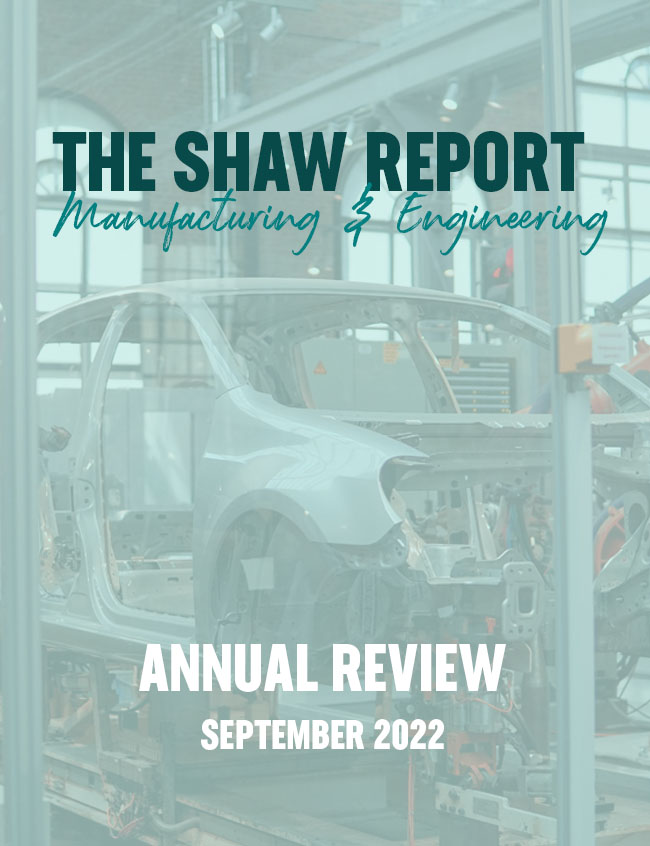What happened next?
What happened after Trunki secured BGF funding?
In this exclusive interview, we catch up with Rob Law, Founder of Trunki, to see What Happened Next after we helped him secure just under £4 million of development capital from the Business Growth Fund.


Trunki is a household name thanks in part to its much loved ride on suitcase that became a firm favourite of families and celebrities across the world.
The journey hasn’t always been an easy one for its founder Rob Law. In 2006 he was famously turned down for investment by the business luminaries that made up the BBC’s ferocious ‘Dragon’s Den’ (although it’s important to note that it was their derisory offers that proved to be the issue, rather than Rob or his products).
Having successfully navigated this minor bump, Rob was soon building a successful business. To help him continue the expansion, we raised just under £4 million of development capital from the Business Growth Fund, making Trunki the first business in the South West to secure funding through this innovative fund.
We caught up with Rob to discuss his entrepreneurial journey and what happened next…
• Tell us a bit about Trunki and what happened after the deal.
I founded Trunki, or at least started trading, over 17 years ago. Since then I’ve managed to build a children’s travel gear brand that pretty much went global straight away. My first customer was actually the Museum of Modern Art in New York so I was exporting from day one.
It actually started off with a lot of the major retailers not being interested, partly because they couldn’t decide which department Trunki should sit in – whether it was a children’s toy, homewares etc. I therefore had to get things moving with a direct to consumer website. Back in the day, this wasn’t as straightforward as it is now. We had to custom build it from scratch as there certainly weren’t any e-commerce platforms like ‘Shopify’ around at the time!
Although I didn’t get what I wanted in terms of financing, appearing on the BBC’s ‘Dragon’s Den’ did help to rocket us into UK popular culture and we soon started getting decent store listings form the likes of Mothercare and John Lewis.
It has certainly been a rollercoaster ride – from adding new products to help our customers enjoy the perfect journey, to lows such as Covid when no-one was travelling (very hard for a children’s travel brand!). But we survived and have now come out the other side by exiting the business in February when we sold it to Heroes.
• What did you learn from the whole experience?
In terms of obtaining growth funding then obviously this is exactly what I had in mind when I went on Dragon’s Den. I had wanted what I thought was a reasonable £100,000 for 10% of the business but Richard Farley, for example, would only offer £100,000 for 50% of the business which, of course, I had to politely decline! Three years later, in 2009, I was proven right when I was actually able to raise £200,000 for 10% of the business.
In 2013, working with Shaw & Co, we raised around £4m with BGF to really grow the business further. One of the key takeaways here was the important of running a competitive process to drive the value up, which Shaw & Co oversaw, where you have a number of funders vying and bidding against each other to fund your business. This method also proved important when we came to selling the business. We had two lead bidders that kept increasing their offers as a result of the competitive tension produced by the process.
Another important learning was that I had spent a lot of time building up the company culture, the mission, the vision, the values etc. We very much about driving innovation, being responsible to people and the environment, and being dynamic in terms of reacting to market conditions, while having some fun along the way. Over time, it became clear that these values did not align with those of our investors – particularly the bit about having fun!
• How did you approach selling the business?
Going into the process it was pretty clear that we were going to facilitate a trade sale. However, having run the process, some more dynamic businesses in the Amazon aggregator space came to the fore. These are businesses that are solely geared to selling on Amazon. They come into the market with large funds to take over businesses and scale them in order to generate revenue for the company and its investors and stakeholders. They’re well versed with what kind of companies they need to acquire and what they need to do to help the company expand.
Their back office functions, support teams etc were potentially a great help to a brand such as ours while in turn, our direct to consumer model would enable them not to be solely reliant on selling their products on Amazon where fees for the aggregators were constantly rising. They were able to utilise our non-Amazon channels, and this reciprocal agreement also ensured that all our staff kept their jobs.

• What was your next business project?
I have stayed on as General Manager of Trunki to help lead the brand into the future, utilising my team and the resources available via our acquiror Heroes.
A couple of years ago I also founded an agency that helps companies sell on Amazon. Amazon is obviously the largest global retailer but selling on there can be quite complex and there are a number of things that really help and hinder your sales. Knowing all this from my time with Trunki is really helping my clients. We have about six people helping seven brands and it’s been going really well.
• What were some of the key things you learnt when developing the Trunki brand?
There were lots of things that happened along the way and, of course, you always remember the failures. Our biggest failure was launching a suitcase product for the teen market. We raised about £160,000 on a crowdfunding platform called Indiegogo but we had to rush the product out due to cash constraints.
It also turned out that the product actually appealed more to business travellers, rather than youngsters, because it did look rather cool. Unfortunately, expectations from business travellers are much higher and they had criticisms of the product, although it had actually been designed for youngsters! They expected Samsonite indestructability for international travel whereas we had had sleepovers with friends in mind. It was also a lesson in terms of marketing and channels being geared to parents, rather than to the youngsters themselves. In the end we had to discontinue the product which is always a shame.
It also highlighted the importance of setting aside working capital for new product development. For example, I wanted to marry our Trunki toe strap concept – where parents can tow children along through airports etc while the children ‘ride’ their Trunki suitcases – to things such as balance bikes etc. Unfortunately we just didn’t have the resources to develop that product and bring it to market. However, I was able to get around this by working with Halfords and getting a licensing agreement to bring a foldable balance bike and scooter to market via their retail channels, and without the need for working capital. It’s selling really well and we get a royalty from that.
• In terms of the international markets what have you learnt?
Cultural differences, different ways of doing and customer behaviour are all intrinsically fascinating. For example, we had one product – a purple Trunki – that was a comparative flop in Northern Europe where purple is seen as more of a funereal colour. We also developed a range in pastel colours which were ideal for Scandinavia but not China or the United States where they want much bolder colours.
Another learning was the need to have local distributors in each major territory, enabling you to utilise their knowledge, and it’s also worth noting that you need to do as much homework as possible when it comes to language - ‘Trunki’ in Poland actually means to be excessively drunk!
Markets also change. For example, we had a lot of success in China early on, selling 60,000 units as Western brands were seen as very aspirational. However, the Chinese companies have upped their game and now the homegrown products are just as good.
The USA also continues to be a challenge, a bit of a struggle, and it’s a huge drain on working capital. I licensed it to a US company but unfortunately they didn’t invest in marketing so we exited that partnership. We then pulled back to an Amazon-only model but Covid hit that. Now, with Heroes, we’re trying again as they have huge foothold over there.
• What advice would you give to other businesses looking to fund or sell their business?
You have to weigh up why you are selling it. Are you trying to maximise the exit value for yourself or are you looking for someone to take the business to the next level and look after your team?
• How important was Shaw & Co’s advice?
They provided really useful, valid advice that worked for us. The competitive process for funding went very well and, generally, it was great to have someone who had done it many times before and who could help with your decision making.
If you'd like to discuss how Shaw & Co can help you sell, buy or fund the growth of a business, please book a meeting here
INDUSTRY Content

The Shaw Report: Banking, Financial & Insurance Services - Annual Report #2
Shaw Report
|
February 28, 2023

The Shaw Report - Healthcare & Life Sciences Annual Review December 2022
Shaw Report
|
December 14, 2022

The Shaw Report - Wholesale & Retail Trade Industry Interim Review December 2022
Shaw Report
|
December 14, 2022

The Shaw Report - Leisure, Tourism and Sport Annual Review November 2022
Shaw Report
|
November 29, 2022

The Shaw Report - Property & Construction Industry Interim Review November 2022
Shaw Report
|
November 23, 2022

The Shaw Report - Technology Media & Telecoms Industry Annual Review October 2022
Shaw Report
|
October 19, 2022

The Shaw Report - Automotive, Transport & Logistics Industry Annual Review October 2022
Shaw Report
|
October 12, 2022

The Shaw Report - Professional Services Industry Interim Review September 2022
Shaw Report
|
September 26, 2022

The Shaw Report - Manufacturing & Engineering Industry Annual Review September 2022
Shaw Report
|
September 1, 2022

The Shaw Report - Banking, Financial and Insurance Services Industry Interim Review August 2022
Shaw Report
|
August 23, 2022
Subscribe for updates


Subscribe to receive news updates, Connected Magazine, details of forthcoming events, opinion and industry topics that matter to you, and more.



































